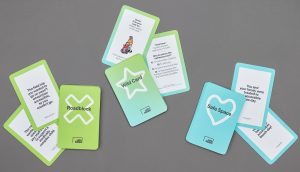In the first of a three-part strategy magazine feature adapted for Media in Canada, writer Jonathan Paul looks at the new ways in which digital technology is being used in retail in environments.
Every year Mike Kasprow, VP, CD and co-founder of Toronto-based interactive marketing agency Trapeze, travels to the Microsoft Research Design Expo – a forum where top design schools display students’ prototype interaction-design ideas – where he volunteers as co-chair and creative director. A regular fixture is the Home of the Future, an ‘in beta residence’ that’s constantly updated with cutting-edge tech. Years ago, says Kasprow, one particular feature was a mirror that, using image recognition, would allow a person to hold up a shirt and automatically access an inventory of all the pants they own, showing which ones would match.
‘If you think about that kind of utility in a store, you’re increasing your basket size,’ says Kasprow. ‘Embedded technologies in retail and branded spaces give you the opportunity to connect in a way that’s convenient and useful to [the customer].’
And the Home of the Future is arriving in stores soon. In January, Adidas unveiled its interactive adiVerse Virtual Footwear Wall at the 2011 National Retail Federation’s convention in New York. Designed to benefit smaller retailers, it extends Adidas’ 8,000-plus range of shoes into the store, virtually placing each one at customers’ fingertips. (In the video below, Chris Aubrey, Adidas’ VP of global retail marketing, demonstrates the adiVerse.)
Created in partnership with Intel, and designed by London-based Start Creative, the wall consists of large LCD touch-screens and uses facial recognition tech to determine a customer’s gender in order to customize their product experience. They can browse shoes with a mere touch, accessing real-time 3D renderings, with the ability to spin them around, zoom in, as well as learn more – like the technology behind each model. Customers can even find out what people are saying about each shoe on Twitter.
Marrying the efficiency of e-commerce with the brick and mortar retail experience, adiVerse lets customers add desired shoes to their virtual basket and start a checkout process with an iPad-toting customer service rep to confirm the purchase, completing the buy with a credit card or cash payment.
‘[The adiVerse] definitely adds value because it thinks about the consumer and reacts before they even engage it,’ says Robin Hassan, group director, digital, at Starcom in Toronto.
‘That’s the success of it – thinking about the experience of the consumer and how you’re making it helpful for them. The thing that worries me is that if you’re not careful about the added value that you’re bringing to the table and bombarding consumers with too many options, that’s where it’s going to be messy.’
Adidas and the rest of the world will have to wait about a year to see how shoppers navigate the adiVerse, when the company plans to roll out a prototype store in the U.K. While the adiVerse is at the very bleeding edge, it’s a perfect indication as to the kind of added-value experiences brands are looking to create.
It’s been a slower build in Canada, but ground’s been broken. At the end of 2009, in collaboration with Halifax-based design studio Breakhouse and Toronto-based advertising and communications agency Clean Sheet, Trapeze helped launch Wind Mobile’s retail locations across the country with Microsoft Surface as a technological centrepiece to the store design, embedded into large tables in the middle of each location. The multi-touch interactive displays allow customers to navigate device and plan details by hand, and, along with wall-mounted digital screens showing customers’ comments from the Wind Mobile website, aim to more effectively communicate the brand’s ‘Power of Conversation’ positioning to customers.
Since Wind’s retail launch, interactive technologies have begun popping up with more regularity in Canadian telco retail design where, like the adiVerse, they marry the offline retail experience with an online one to provide customers the freedom to interact with the brand in whichever way they see fit.






















